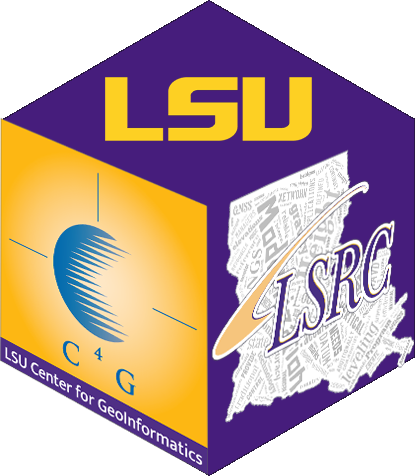Louisiana State University’s Center for GeoInformatics (C4G) in its role as the Louisiana Spatial Reference Center (LSRC) has been awarded a grant for $3.1 million over the next five years (2018-2023) from the National Oceanic and Atmospheric Administration (NOAA) for their support in the Regional Geospatial Modeling. The Principal Investigator and Project Director is Boyd Professor George Z. Voyiadjis, Director of the C4G with Co-Investigators Randy L. Osborne, Clifford J. Mugnier and J. Anthony Cavell. Larry Dunaway and Jon Cliburn round out the investigating team.
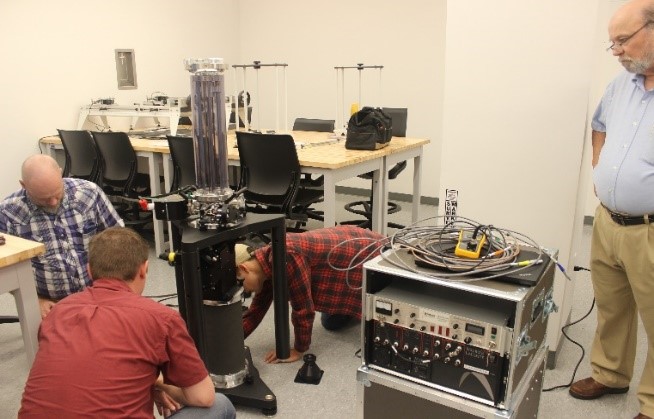
the Baton Rouge – AA gravity mark in the CEE Materials Lab located in
Patrick F. Taylor Hall.
The LSRC’s grant awarded in collaboration with a continuing 5-year Gulf Coast-wide partnership among Mississippi, Texas, Louisiana, Florida and Alabama; is to support the improvement and modernization of NOAA’s National Spatial Reference System (NSRS). Key to these efforts will be the collection of accurate, precise, and consistent geospatial data to improve regional geospatial models and to coordinate the use of this geospatial data by users to improve the NSRS for the states bordering the northern Gulf of Mexico. Partnership outreach efforts will bring awareness, access, and education to users of the NSRS. The geospatial data resources produced through the partnerships will improve NSRS Height Modernization efforts across the entire northern Gulf of Mexico coast.
The LSRC at Louisiana State University proposed a unified, regional partnership that will focus on the following objectives as the Louisiana portion of the broader proposal package submitted by the University of Southern Mississippi.
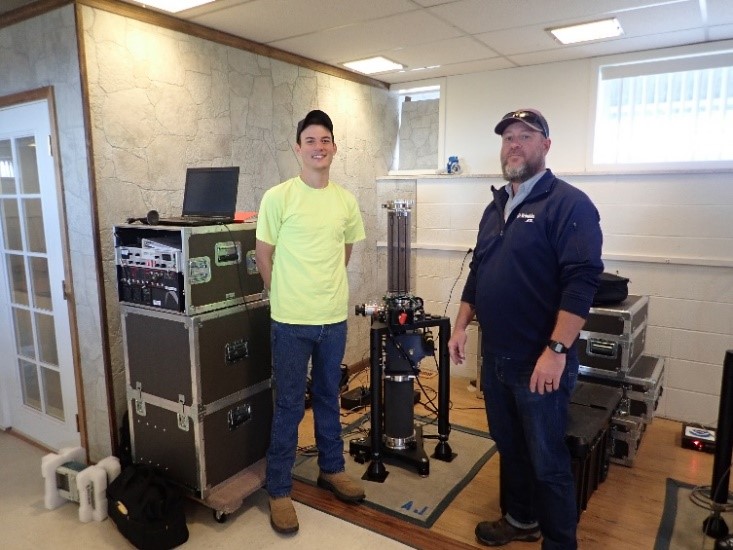
American Comparison of Absolute Gravimeters event heald at NOAA’s
Table Mountain Gravity Observatory in Longmont, CO.
LSRC will work to enhance the infrastructure of geodetic control, coastal remote sensing data, terrestrial gravity measurements and other physical datasets. Various means will be used which include deploying two Scintrex CG-5 Relative Gravity Meters that were purchased at a cost of $100K each under prior grants, one from a NOAA/NGS height modernization grant and another from an LSU Board of Regents grant. C4G’s new self-funded $400K Micro-g LaCoste FG5-X Absolute Gravity Meter will be deployed to collect terrestrial gravity measurements at the C4G’s Continuously Operating Reference Stations (CORS), NSRS benchmarks, and LSRC eccentric benchmarks, which will allow LSRC to improve the geodetic modeling for future datums and NSRS modernization.
Several newly acquired pieces of equipment will be used for these observations. The Scintrex Trident Tripod, which in conjunction with C4G’s CG-5 Relative Gravity Meters will be used to observe the Gravity Gradient by accurately positioning the gravity meter at three predetermined levels for quick and precise measurements. The LSRC will acquire through the NOAA grant a $100K Digital Zenith camera in the first year of this grant from the Institute of Geodesy and Geoinformatics located at the University of Latvia and use this new instrument to measure the vertical deflection at CORS sites. The deflection of the vertical is a measure of how far the gravity direction has shifted, caused by local anomalies, which helps increase the accuracy of local surveys of the Earth’s gravity field.
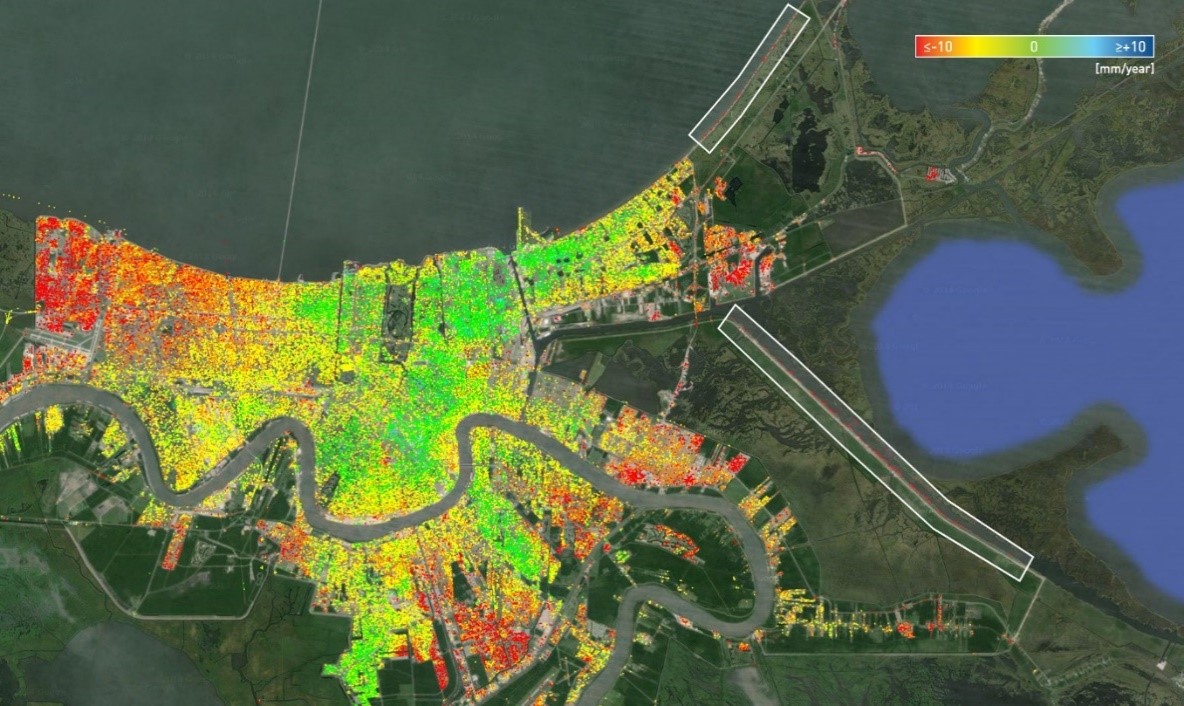
LSRC will also collaborate with NASA’s Jet Propulsion Lab (JPL) in order to investigate targeting methods using InSAR to track regional subsidence to help develop guidelines and tools to access geodetic control and to manipulate and analyze geodetic data.
LSRC continues to maintain its existing geospatial data clearinghouse it established to provide free access to information that includes CORS raw data, flood maps, satellite, and aerial photography, digital elevation models (e.g., LiDAR, RADAR, and InSAR), and other relevant assets necessary for regional geospatial modeling.
The national goal is to develop models with accuracies better than 2 cm (3/4 in.). The dynamic nature of Louisiana’s geology makes it an outlier when continental geodetic models are developed, with many negative results for Louisiana. The LSU C4G has demonstrated the ability to observe precise terrestrial gravity, elevations and geometric relationships to the degree necessary for improving the geodetic models. Observing and possibly predicting subsidence in south Louisiana and along the Gulf Coast has been an acute challenge recognized since the 1950s, and becomes more acute with time. The NOAA grant seeks to build on the work of the LSU C4G that shows promise of bringing Louisiana, and the Gulf Coast into the norm, permitting accurate geoid models, flood mapping, coastal studies, levee construction and public safety in general.
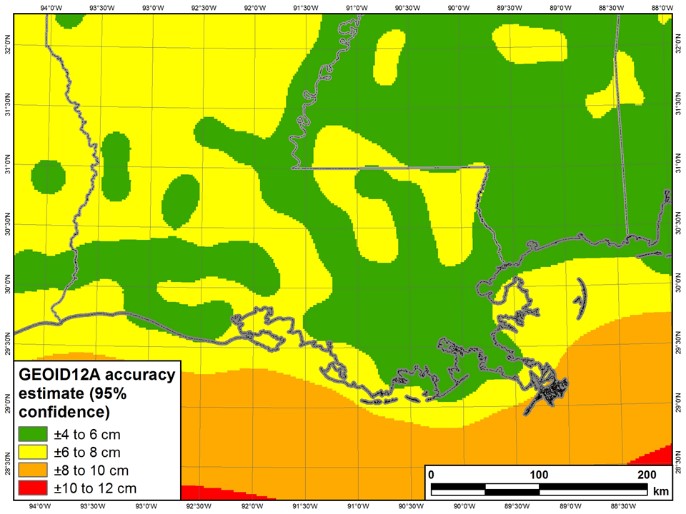
at ± 4 to 8 cm in Louisiana
The Center for GeoInformatics was created in 2001 to build new research and services in Geodesy and Geoinformatics for the geodetic and geophysical communities. The C4G, in cooperation with NOAA’s National Geodetic Survey (NGS), founded the Louisiana Spatial Reference Center in 2002 as a partnership focused on a state-of-the-art positional infrastructure for the state of Louisiana and to provide technical leadership, training and access to positional data. LSRC is responsible for the network of GNSS control stations; a reliable spatial reference system in Louisiana (GULFnet). The C4G maintains the GNSS Real Time Network (C4Gnet), established in 2007 to serve surveying, mapping, utilities, emergency response, agriculture, forestry, public safety, transportation, machine control for construction, environmental, and scientific research. – Positioning Louisiana for the Future.
